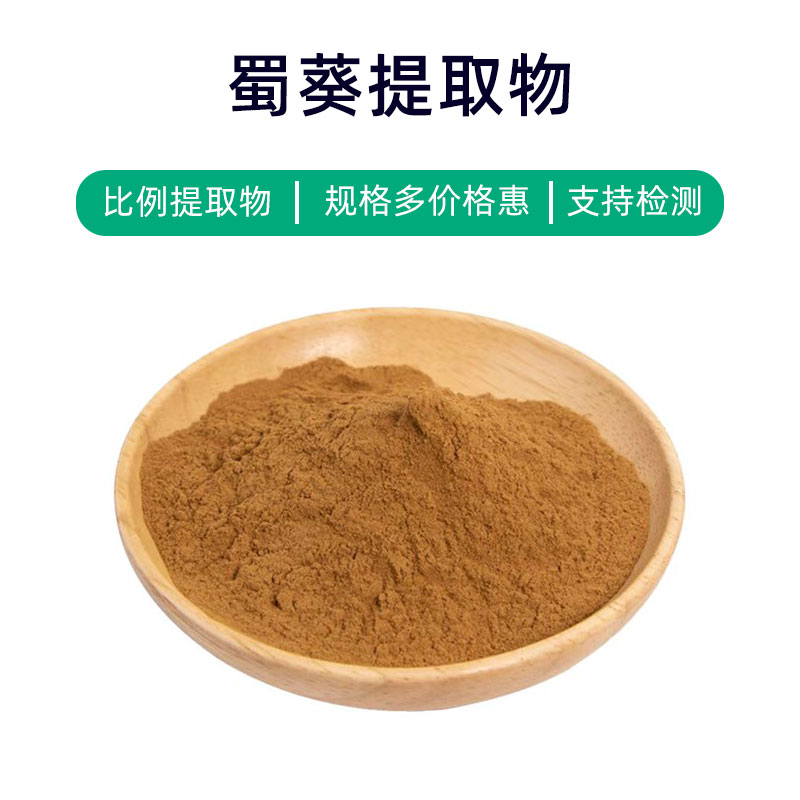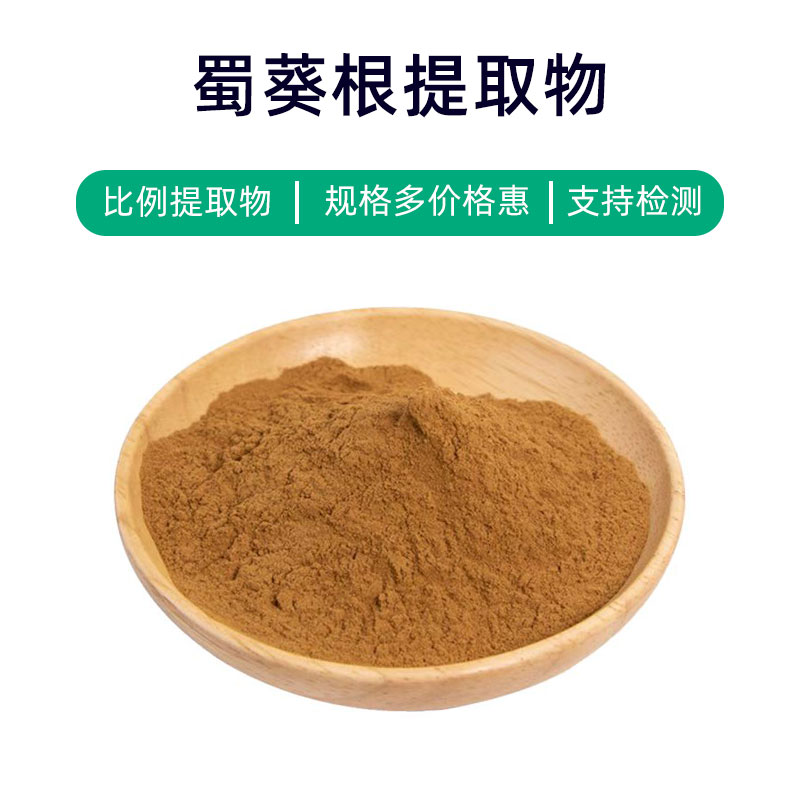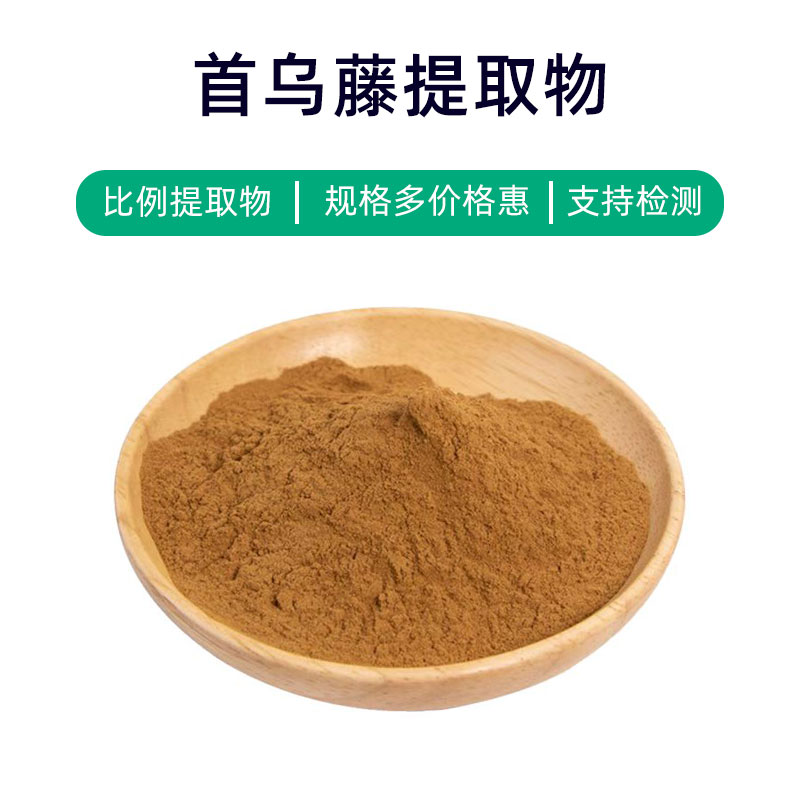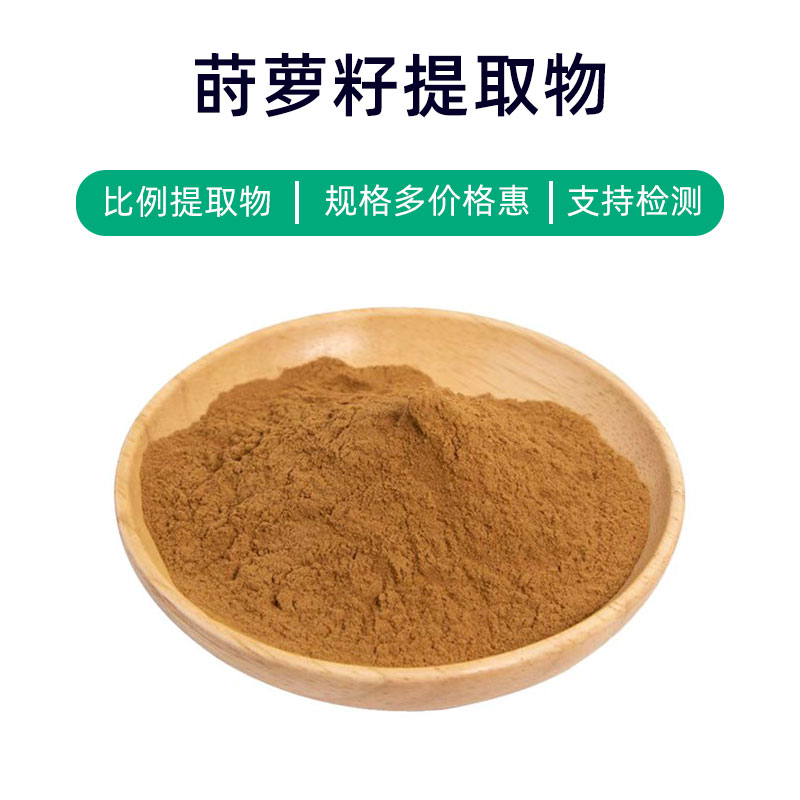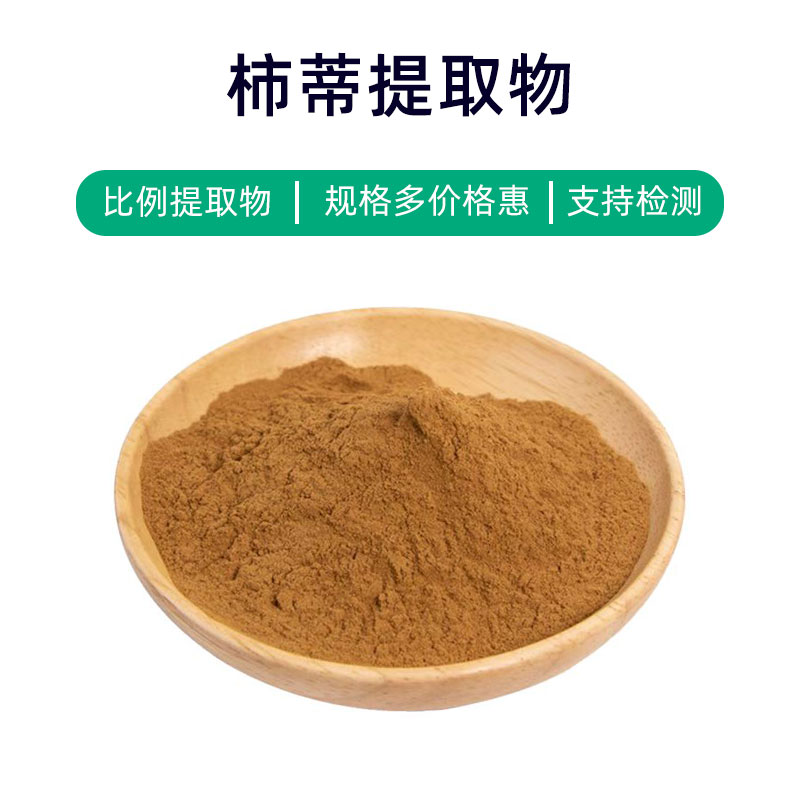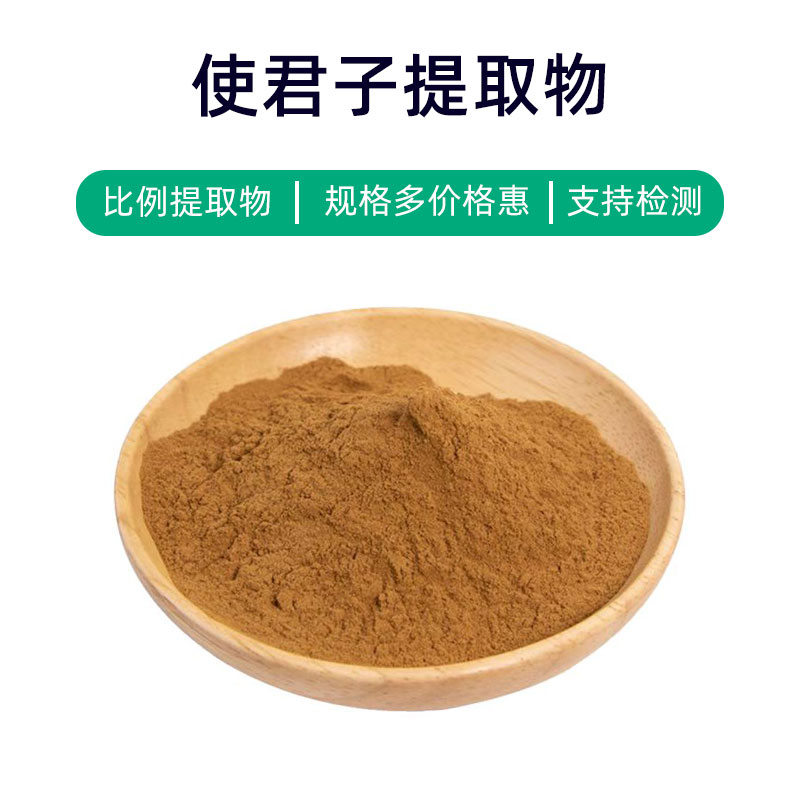Mulberry Extract Product Introduction
Mulberry extract is a natural plant extract obtained from the bark, leaves, or fruit of the mulberry tree, with main components including flavonoids and polyphenols. These active ingredients provide mulberry extract with a variety of benefits and applications.
Firstly, mulberry extract has strong antioxidant properties, can neutralize free radicals, delay cellular aging, and helps protect the skin from environmental pollution and UV damage. Secondly, it also shows good anti-inflammatory properties, alleviating skin inflammation, soothing sensitive skin, and promoting skin repair and regeneration. In addition, mulberry extract is widely used in skin whitening products, inhibiting melanin formation, lightening dark spots, and evening out skin tone for a brighter and more refined complexion.
In the pharmaceutical and health product fields, mulberry extract is also commonly used. Its antioxidant and anti-inflammatory properties help enhance human immunity, improve blood circulation, and prevent cardiovascular diseases. Moreover, it is an important ingredient in health product formulations, assisting in regulating blood sugar and lipids, and improving sleep quality.
Overall, mulberry extract, as a natural plant extract, has a wide range of application prospects in skincare, pharmaceuticals, and health products. Its various benefits make it an indispensable component in many products, contributing greatly to health and beauty.
Mulberry Extract Production Process
The production process of mulberry extract typically includes the following main steps:
- Raw Material Preparation: Select high-quality bark, leaves, or fruit of the mulberry tree as raw materials, clean and preprocess to remove impurities and surface dirt.
- Extraction Process: Utilize appropriate extraction methods, commonly water extraction or alcohol extraction. Soak or heat the preprocessed mulberry raw materials with the extracting agent to dissolve the active components into the solvent.
- Filtration and Concentration: Filter the obtained mixture to remove solid residues, then use evaporation or vacuum concentration methods to evaporate the solvent, yielding a concentrated solution.
- Purification and Separation: Purify and separate the concentrated solution, commonly employing techniques such as column chromatography or gel filtration to remove impurities and other components in the extract, resulting in purified mulberry extract.
- Drying: Dry the purified mulberry extract to remove residual moisture, commonly using methods like spray drying or vacuum drying.
- Grinding and Sieving: Grind and sieve the dried mulberry extract to obtain a uniform fine powder, improving its solubility and stability.
- Quality Control: Conduct quality testing and control on the final mulberry extract product, including appearance inspection, active ingredient content determination, and microbial testing to ensure the product meets relevant standards and requirements.
- Packaging and Storage: Package the qualified mulberry extract product, often using sealed packaging to prevent moisture and oxidation, and store in a dry, cool environment away from direct sunlight and high temperatures to maintain the stability and efficacy of active components.
Mulberry Extract Benefits and Side Effects
Mulberry extract is a natural plant extract with multiple benefits and actions, including:
- Antioxidant Effects: Rich in polyphenolic compounds, mulberry extract has strong antioxidant properties, clearing free radicals from the body, delaying cellular aging, and protecting cells from oxidative damage.
- Anti-inflammatory Properties: Biologically active components in mulberry extract exhibit anti-inflammatory effects, inhibiting the occurrence and development of inflammatory responses, alleviating symptoms of inflammation-related diseases.
- Antimicrobial Effects: Mulberry extract shows inhibitory effects against various bacteria and fungi, usable for preventing and treating infection-related diseases such as skin infections and respiratory infections.
- Blood Sugar Regulation: Research indicates that mulberry extract can lower blood sugar levels and improve insulin sensitivity, providing auxiliary treatment benefits for diabetic patients.
- Liver Protection: Mulberry extract offers protective effects on the liver, reducing liver damage and promoting liver cell regeneration, with therapeutic effects on liver diseases like hepatitis and fatty liver.
- Cardiovascular Health Improvement: Helps lower blood lipids and inhibit platelet aggregation, potentially preventing cardiovascular diseases and regulating conditions like hypertension and hyperlipidemia.
- Anti-allergy Effects: Active components in mulberry extract can inhibit allergic reactions, reducing symptoms related to allergic rhinitis and skin allergies.
- Anti-tumor Effects: Some studies suggest that certain components in mulberry extract exhibit anti-tumor activity, inhibiting tumor cell proliferation and metastasis, with some suppression effects on specific tumors.
As a natural plant extract, mulberry extract generally has a high safety profile, but individual differences and potential allergic reactions should be taken into account during use. When utilized under proper medical guidance, side effects are rare. However, excessive use should be avoided to prevent adverse reactions.
Mulberry Extract Application Scenarios and Dosage
Mulberry extract finds broad applications in medicine, food, and cosmetics. Here are its specific applications and recommended dosages across different fields:
- Medical Field:
- Uses: Mainly used in treating various diseases like inflammatory diseases, liver conditions, cardiovascular diseases, diabetes, etc.
- Dosage: Common uses include oral intake, topical application, and injection. Specific formulations and dosages should be adjusted according to medical prescriptions, generally advising to follow a physician's recommendations.
- Food Industry:
- Uses: Serves as a food additive in health foods and functional beverages.
- Dosage: Usually added in solid or liquid form to foods, with quantities regulated based on food types and national standards, complying with food safety regulations.
- Cosmetics Field:
- Uses: Commonly used in cosmetics for its antioxidant, anti-inflammatory, whitening, and moisturizing effects, applicable in facial skincare, whitening products, and anti-aging products.
- Dosage: Can be added as an ingredient in skincare products, masks, serums, etc., typically used at levels between 0.1% and 5%, with specific amounts adjusted based on product formulations.
- Other Applications:
- Mulberry extract is also utilized in animal feed, pesticides, dyes, etc., exhibiting certain biological activity and application prospects.
In conclusion, as a natural plant extract, mulberry extract boasts wide application potential and good safety, but dosage should be controlled reasonably according to specific circumstances and product formulations to ensure safety and efficacy.
Mulberry Plant Source Introduction, Distribution, and Growth Environment
Mulberry (scientific name: Morus alba) is a species of mulberry tree belonging to the Moraceae family and is a common deciduous tree or shrub. Its extract is widely used in medicine, food, and cosmetics. Here’s detailed information regarding the source plant of mulberry extract, its distribution, and growth environment:
- Plant Overview:
- Mulberry is a plant with strong cold resistance and wide adaptability, typically reaching heights of 10-20 meters, and sometimes even growing up to 30 meters. Its bark is usually grayish-white or light gray, with oval or lanceolate leaves that are smooth on the surface, serrated at the edges, and bright green in color.
- When cultivated, mulberry is generally pruned into bushy shrubs or low trees, making it an important economic plant.
- Distribution:
- Native to China, mulberry is mainly found in the southeastern coastal areas of the country, such as Zhejiang, Fujian, Guangdong, and Jiangsu. Additionally, it is distributed in other regions of Asia, including Japan, South Korea, and India.
- Due to its strong cold resistance and adaptability, it has also been introduced to various parts of the world, including Europe, North America, and Australia.
- Growth Environment:
- Mulberry prefers growing in sunny, humid environments and is not particular about soil, thriving in both fertile and poor soils.
- It shows strong climate adaptability and can grow in warm, humid subtropical and temperate regions, generally requiring an average annual temperature between 15-25 degrees Celsius.
- Growth Habits:
- Mulberry is a fast-growing plant that typically takes a few years for seeds to germinate and trees to mature, with a long growth period that allows it to continue growing for decades or longer.
- It can withstand certain levels of drought and saline-alkaline stress but thrives best in moist environments and demonstrates good adaptability to wet soils.
Overall, as an important economic plant, mulberry is widely cultivated and utilized in both China and around the world. Its broad distribution and strong adaptability make it a plant of significant economic value and ecological importance.
Mulberry Extract Processing and Storage
The processing of mulberry extract typically includes the following steps: first, mature mulberry plants are harvested, followed by cleaning and processing to remove impurities and unwanted parts. Next, the mulberry plants are ground or crushed to extract the target components. Extraction typically employs solvent extraction, ultrasound extraction, or other physical extraction methods. Once the extract is obtained, further steps of filtration, concentration, and drying are performed, ultimately resulting in mulberry extract. For storage, it should be placed in a cool, dry environment, away from direct sunlight and moisture. Sealing in a container can prevent oxygen and moisture ingress, maintaining stability and activity. Regular checks on the appearance and quality of the extract are necessary to ensure it meets requirements.
Monica Sun is a seasoned expert in the plant extraction industry with over a decade of experience in research and production. She specializes in the extraction and purification of plant active ingredients, focusing on driving innovation in natural product applications. Monica has participated in the development of multiple functional plant extracts, delivering high-value natural raw material solutions for the health food, pharmaceutical, and dietary supplement sectors.









